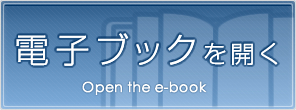For the Safety Navigation In Japanese Coastal Waters page 47/120
このページは For the Safety Navigation In Japanese Coastal Waters の電子ブックに掲載されている47ページの概要です。
秒後に電子ブックの対象ページへ移動します。
「電子ブックを開く」をクリックすると今すぐ対象ページへ移動します。
概要:
- 43 -Fig. 2-16Fig. 2-15b. In Naka-no-Se Traffic Route, one-way traffic is in effect in the northern direction; inUko East Traffic Route one-way traffic in the northern direction; in Uko West TrafficR....
- 43 -Fig. 2-16Fig. 2-15b. In Naka-no-Se Traffic Route, one-way traffic is in effect in the northern direction; inUko East Traffic Route one-way traffic in the northern direction; in Uko West TrafficRoute one-way in the southern direction, in Bisan Seto North Traffic Route one-way inthe western direction; and in Bisan Seto South Traffic Route one-way traffic in the easterndirection.c. In Irago Suido Traffic Route,(a) Vessels should keep right side of the traffic route as much as possible.(b) As a rule, huge vessels and 2nd class vessels (vessels of 130m and longer and less than 200min length) may encounter within the traffic route.However, when one of these vessels is loadingdangerous materials, when the traffic route isexpected to be closed due to the operationalcondition of fishing boats etc., navigating width ofthe route becomes below two-third of the usualwidth, sea disasters occur inside or around the trafficroute, or it becomes difficult to know the movementof vessels inside and around the traffic route due tothe trouble with radar equipment, Japan Coast Guardwill instruct these vessels to wait outside the trafficroute by signaling etc. Then the vessels must followthe instruction. (For signals in this case, see “(6)Traffic control signals in Irago Suido Traffic Routeand Mizushima Traffic Route.”)

